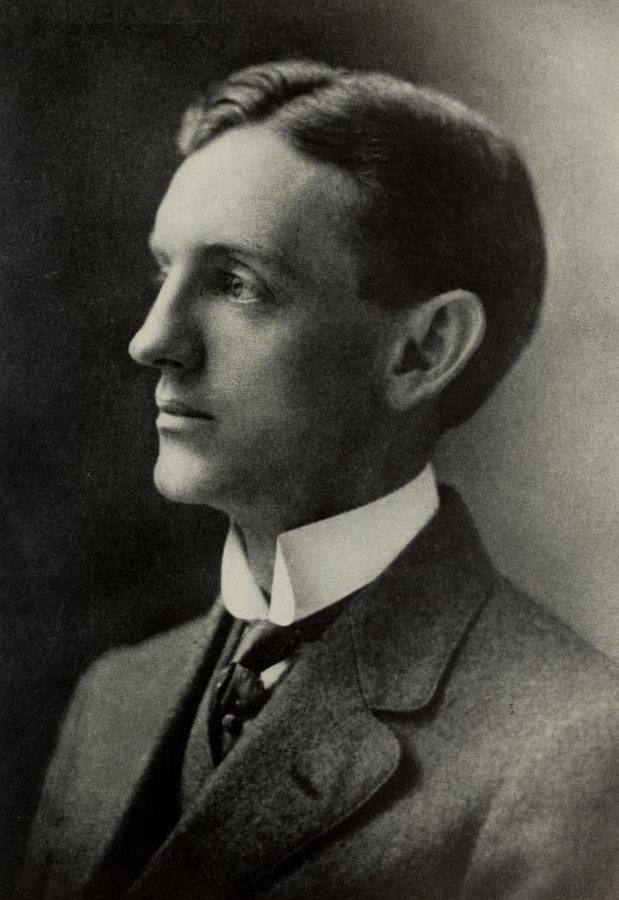

In the North Carolina of a century ago, illiteracy and ill-health ran rampant in a state of 2.5 million people. The 1917 General Assembly convened amid anxiety over the Great War in Europe but also with high cotton and tobacco prices lifting state government’s fiscal condition. Edward Kidder Graham, the 40-year-old president of the University of North Carolina, seized the moment.
“The university and its friends were ready as never before,” Howard Covington writes in his new book. “This time Graham did not proceed alone, but rallied together with educators at all levels to demand the legislature do something significant for education…One factoid repeated over and over was a report that in 1915 North Carolina taxpayers had spent more on the upkeep of their new automobiles than they had on the salaries of public school superintendents and teachers.”
Newly elected Gov. Thomas W. Bickett favored school construction. Graham sought five years of assured funding to improve the shabby Chapel Hill campus. Among the legislative gains was a $3 million bond issue ($66 million in today’s dollars).
Covington, a former newspaper journalist who has had a prolific second career producing biographies of prominent North Carolinians, tells the story of a transformative two decades in “Fire and Stone: The Making of the University of North Carolina under Presidents Edward Kidder Graham and Harry Woodburn Chase.” The book is published by the UNC Library.
As leaders of a public university, both Graham and Chase had to contend with political and cultural cross-winds. Instead of the Republican-versus-Democratic hyper-partisanship of today, they had to deal with legislatures split by Democratic factionalism, including a strong component of fiscal conservatives. Their gains often came hard-won in an overwhelmingly rural state, while they also tapped into reservoirs of civic support.
Graham graduated from UNC, studied at Columbia and Harvard, and returned to Chapel Hill as a professor and then a dean. University trustees chose him first as acting president in 1913, when he promptly showed the potency of a leader defining a path forward.
Even today, Graham is remembered for his University Day address in which he declared his goal “to make the campus co-extensive with the boundaries of the state…(and) to put the University as head of the state’s educational system in warm sensitive touch with every problem in North Carolina life, small and great.”
Covington reports that Graham allied the university with public schools “more forcefully than any of his predecessors.” He opened the way to faculty and students documenting county-level economic and civic life. Through an address to a farm-life conference in Charlotte, Covington writes, “In effect Graham and the university were throwing in with the farmers and their families, city folks and the wage earners, in a way that had never been articulated in so passionate a fashion.”
Graham’s wife, Susan, died at age 34 of an infection in December 1916. Graham died two years afterwards, a casualty of the war-time flu epidemic. His immediate successor also died of the flu three months later. Then the trustees turned to Chase, a leader with less charisma but with determination and more time to build UNC-Chapel Hill into a robust 20th Century academic enterprise.
Chase, a Massachusetts native, had joined the UNC faculty in 1910; he had a degree in psychology and taught in the education department. While a northerner, Chase expanded Graham’s vision of a university in service to society to encompass the American South. He served as UNC president through the 1920s, then moved on to lead two other major universities; he died in 1955.
In the 1921-22 state budget, UNC got another major infusion — $1.5 million for new buildings that allowed Chase to enlarge the campus. University supporters had conducted masterful grass-roots organizing; trains transported supporters to lobby in the Capitol. “The state had never seen such an uprising of average citizens who had come together behind a common cause,” Covington says.
In 1925, the year of the Scopes trial in Tennessee, Chase appeared before state lawmakers to oppose a resolution designed to prevent public employees, including school teachers, from teaching “evolutionary hypotheses.” Chase defended academic freedom and free speech by arguing that the Constitution does not promise liberty “to everyone but school teachers.”
Then, as now, some North Carolinians saw the university as a liberal stronghold that threatened to turn young people away from their cultural and religious moorings. The textile industry pushed back against university scholars examining wage and working conditions. Neither Chase nor Graham sought to overturn legalized racial segregation, although both extended campus resources and educational opportunities for women.
Still, the decisions of Graham and Chase — and their sense of a mutual dependence between the state and its public education institutions — form enduring underpinnings to the North Carolina of today. Under Graham’s guidance, writes Covington, “students and faculty members thought seriously about public service as an obligation to the state that had embraced them.” Many students and faculty still think about that obligation and mutual dependence, even as debate swirls in this time and place over sustaining and governing public education.


